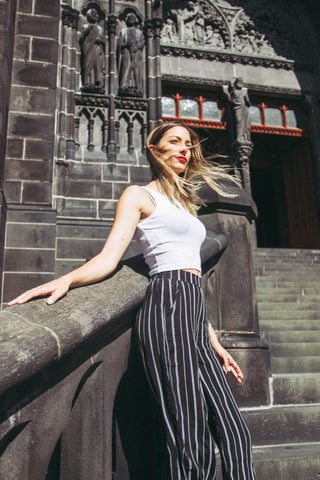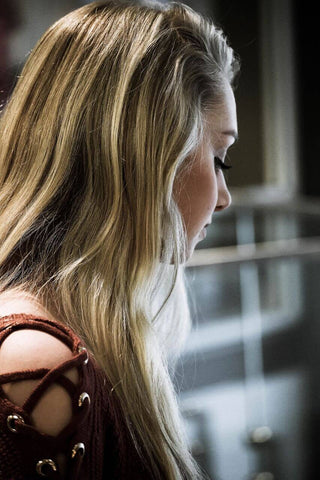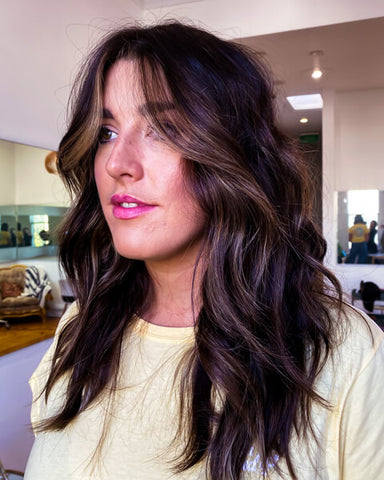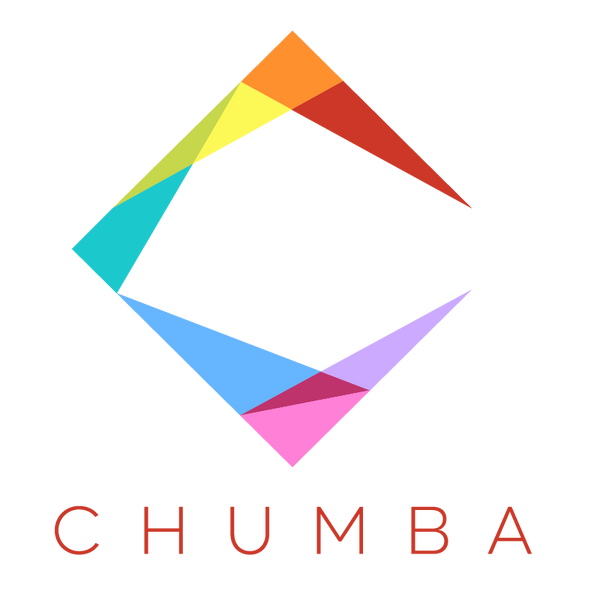Balayage hair colour is one of the most frequent requests in hairdressing salons around the globe. And, while balayage has exploded in terms of popularity over the past few years, the colouring technique has actually been around for decades and we see balayage on long hair most often. But it is true that its prominence in modern hair salons is indeed much more recent. Nonetheless, there is considerable expertise in this technique now, such as our very own Chumba salon in Melbourne!
Over the years, we’ve seen stylists perfect the art of balayage, with some building their entire reputation on their balayage hair techniques, expertise and experience.
Like all fashion, celebrities and supermodels are often the first to show off their natural-looking sun-kissed, soft melting hair colour, but it’s safe to say, balayage is here to stay. Mostly we see balayage on long hair, but it can work with lots of styles and cuts.
Sometimes it seems half the population is asking what is balayage? Other questions include: can balayage be done at home? Just as importantly, how do you choose the right stylist? And, is it true that balayage will work with all hair colours?
So, we’ve pulled the facts together in this ‘essentials’ guide to cover all these questions and more. Read on to discover all there is to know about balayage, the causes of its popularity, as well as the dos and don’ts involved in achieving high-status hair.
What is balayage?
We can all think of women with hair that seems to have extra depth and dimension. And they often look like they just got back from a long beach break. That’s balayage.
And, being a foreign word, let’s be sure we’ve got the spelling correct. It is balayage, not balyage, beleyage, or bellyage!
The word in question, ‘balayage’, is a French word meaning ‘to sweep’ or perhaps ‘to paint’. It is a technique for colouring hair in which the dye is literally hand painted on to the hair. And it is this hand painting that gives the hair a natural, very gradual transition, to the point where there are no obvious or harsh lines of demarcation. Balayage also uses a variety of tones of light and dark to create the appearance of greater dimensions of colour. The result is that it leaves the hair with a blended, very natural glow that looks as if it has been warmed by the sun.
Perhaps one of the most appealing things about balayage is that the colour is something that can be endlessly customised to work with your hair colour and hair type. An expert stylist can paint the hair in a freehand manner, working to emphasis or possibly even play down from certain features of your face. So, you get the dual benefit of accentuating your positive features while also being sure that no one else will be out there, or at that party, with the exact same hair colour as you.
What is the origin of balayage?
Balayage has its origins in the swinging 1970s in France. In those days, best practice was to colour hair using caps and foils, which you probably know well. By contrast, balayage was a revolutionary new technique, applying cotton strips to separate the coloured hair from un-coloured hair, resulting in that effortless-looking, sun-kissed effect. In the 1990s, balayage arrived in the US, only becoming popular in relatively recent years. Many names come to mind, but we can certainly thank celebrities like Kim Kardashian (of course), Jennifer Lopez, Jessica Alba, and Olivia Palermo and Chrissy Teigen (pictured), for showcasing balayage hair.

How is the balayage colouring technique actually done?

As mentioned above, balayage means to ‘paint’ or ‘sweep’ – it’s a colouring process that achieves natural-looking highlights. With balayage, colour is literally brushed in a sweeping motion across small sections of hair on to a backing board or foil. Because it is such a freehand style it works to create highlights that seamlessly blend through the hair. One of the most defining features is that, with balayage, the fade line between the darker and lighter colours is not clearly distinguishable. Moreover, extra depth and dimension are achieved by leaving darker pieces at the bottom.
Perhaps one of the things that makes balayage so popular is that the hair requires less maintenance because this natural transition does not need constant adjustments or updates.
Colouring techniques
An expert colourist actually paints the colour directly on to the hair strands. This freehand work is what achieves the natural blended look.
A more dramatic colour transition can be achieved by bleaching the bottom half of the hair and then colouring lighter shades on the top with the use of traditional foils. This is a more traditional colouring method that can also achieve a soft blend between the two colours.
Is balayage good for you?
The possibilities with balayage are limited only by our imagination. It’s entirely up to you how much of a change you would like and how daring you’re feeling.
Balayage is really a gentler foray into the world of colouring and may be more appealing if you have never had your hair dyed. You really need to think about how you generally style your hair and what you’re comfortable with, as this is likely to determine whether you opt for balayage or consider doing something else. For example, balayage looks beautiful when finished with that beachy flowing look, whereas a strong traditional bob haircut or straight hair would generally show off more drastic colour blocking. Regardless, it is recommended that you get advice from an expert colourist to ensure that you are making an informed choice. There is no right or wrong, just what works for your look and lifestyle.

How can you be sure your balyage hair has been done properly?
The main aim of balayage is to create a natural, subtle, blend. Therefore, most stylists would recommend the coloured pieces should be close together, be softer at the root, then tend to thicken moving to the end. This also means having darker pieces left throughout the ends to ensure that sought after natural look is achieved and requires little maintenance.
Balayage is best applied to only the surface of your hair, and not saturated at all. This can be done with a thicker clay dye for colour, which also works to avoid harsh streaks of colour.
As balayage is a specialised technique it is always best to see a professional hair colourist, someone with genuine experience and knowledge in this area, like the team at Chumba.
Your colourist – it goes without saying – should use only the correct products for the colour you are looking to achieve. And should be taking account of your hair type and, importantly but often neglected, knowing when to rinse the hair. If your hair is rinsed too early, the hair risks not lifting correctly, and this can lead to a brassy orange colour shade. The bottom line is, if the colour is not applied properly, it is highly likely you will be left with patchy hair, not balayage.
Before selecting a colourist make sure you check out their social media and read reviews to be confident that they will be right for the job. If you’re one of the small number of people who have had an unfortunate balayage experience, please get back on the bike. Bad colour jobs can be fixed with techniques like root melting or toning down the colour. You can always book a consultation for any repairs, but best not to get into this situation in the first place.
Is maintenance a big concern with balayage?
It is true that balayage and highlight techniques both require a specialist colourist and a reasonable budget to begin with. However, one of the biggest appeals of balyage is just how beautiful women can look with only minimum maintenance.
As noted earlier, because balayage doesn’t actually use any real demarcation lines, it grows out easily, without the need for annoying, time-consuming touch-ups at the salon. So, if this is your first time, you think about two or three visits to the salon to allow for the build-up the colour. It is best to be cautious in this way, as lightening the hair too dramatically in one session can be damaging.
Typically you can expect to visit your hair colourist every six weeks to achieve the ultimate effect. Then, once that perfect shade is achieved, you can go anywhere up to four months until you need a further balayage appointment. Although you might need to visit your colourist in between for a toner to freshen up the colour.

What kind of hair does balayage work best with?
Another reason for its popularity, balayage works on most hair lengths and hair types, including black, brown, red and blonde. However, if you have a hair style like a pixie cut, you’re probably not a normal balayage candidate, since there isn’t enough hair to create those seamless highlights. Balayage is especially popular on long, textured hair types to create that beachy, sun-kissed celebrity look.
If you have shorter hair and now want longer, beachy hair don’t despair, keep reading to learn how to get long hair in under five minutes!
How to make balayage hair last?
Like any colour treatment for hair, it is important to protect the hair and use the right products to maintain your colour. It’s also important to put moisture back into your hair between appointments. We recommend using salon-quality sulphate-free shampoo products to ensure that the colour is not stripped away, as well as using a purple reinforcing shampoo, which will eliminate any brassy tones until your next salon appointment. Be sure to speak with your colourist before leaving the salon about any care tips for your specific style, to ensure that your new look is maintained as best as possible.
Is balayage just a trend?
Yes, it is true that, like all aspects of fashion, many hair trends come and go. Yet you can quite safely predict balayage is here to stay. Since the technique has been around for so long, several decades in fact, since its inception in France, it is hard to foresee a natural, sun-kissed highlighted look going out of style anytime soon. Trends may change, in terms of how heavy the gradation moves from dark to light, and how subtle highlights may be, or even how warm or cool the overall effect is. But, while you can never say never, the beautiful depth and dimension that can be achieved with balyage hair is pretty much a timeless classic.

Why should I consider going balayage?
1. It is hair for all seasons
If you are looking for something new then the warmer, balayage could be the answer to your dye dreams. Spring is the perfect time to add a more natural glow and lightened tone to your hair moving into the warmer months. Not only will you look like you’ve already spent the early part of the year on a beach break, but balayage as grows out beautifully, it will leave you free to change things up again if you wish. This is not to say that balayage hair is only for the seasons of spring and summer. When painted with darker, warmer blonde or chocolate tones, balyage hair can be just as impressive in autumn and winter as well, just add a cosy fireplace.
2. easily manage YOUR OLD HIGHLIGHTS
If you have old foil highlights that are growing out, balayage is the ideal way to blend these old highlights, and just let them grow out, without the need to re-colour and highlight your hair.
3. ADDED depth and DIMENSION
Balayage brings beautiful colour dimensions to your hair in a natural-looking way. If you are concerned about dying your hair or anxious about a big change, balayage is the perfect way to move ahead. We all know how the sun catches the light and dark tones in our hair. Yet these tones are often something that we didn’t even know our hair had. Well, balayage does the same thing but permanently.
4. IT’S LOW, LOW MAINTENANCE
Generally, people avoid colouring their hair because of the maintenance that is required to keep their hair healthy and keep the colour looking fresh. As mentioned previously, because of the way balayage is freehand painted on to the hair, the colour grows out quite naturally and there are no harsh regrowth lines. This equals far fewer appointments at the salon and less need to continuously re-colour your hair! And, if you get some quality colour care hair products, you will be set to go on with relatively carefree hair for months.
5. ALL HAIR TYPES welcome balayage
One of the things we love about balayage is that works great on all hair types. Whether your hair colour is dark or light, or whether your hair is wavy, straight, curly, short or long, balayage will not discriminate against your hair, as long as an expert hair colourist is doing the work. If you have an expert colourist, they will know exactly what tones will work best for your natural hair colour and face shape, creating a colour job unique to you and your style.
6. IT’S EASY ON THE HAIR and your time
Because balayage highlights are placed in a strategic way throughout the hair, you can avoid the harshness of all-over bleached hair. Hair lightener that is placed along your hairline and around your face can instantly brighten your look and achieve a distinct change, with minimal damage to your hair and with a time commitment that suites many modern women.
7. Richer, THICKER, FULLER hair
Since strategically placed highlights have been placed through the hair in a variety of subtle colours, balayage can give thin or fine hair the illusion of greater thickness and fullness. Moreover, as hair colour actually makes the hair shaft actually expand, it physically does make hair strands thicken up, resulting in fuller hair overall.
Here is the balayage checklist
1. stalk your STYLIST ON INSTAGRAM
Instagram has now become the unofficial portfolio for most stylists and colourists, and it certainly is at Chumba, so you can be sure there will be no guessing games regarding your stylist’s talents before booking. But be warned. If you notice that every woman’s balayage application looks exactly the same, this may not be the right salon or stylist for you. Balayage is really supposed to be about a unique look for each person based on their hair’s texture, natural colour and style of cut. This is ultimately why some basic social media research, which is fun anyhow, and that first consultation with the stylist beforehand are so important.
2. inspiring images help a lot
Have you ever wondered what reason is behind salons have a multitude of magazines lying around? They’re not just to keep you busy with gossip and quizzes while you wait for your appointment. No. They are there so you might be able to show your hairstylist just what you’re looking for. A picture says a thousand words, so if you’re able to show your colourist photos of a style you find attractive and what you like about it. In turn, they will be much more likely to give you the look you’re looking for.
3. BOOK that CONSULTATION
Getting deep and meaningful with your stylist before making the commitment to colour your hair is extremely important. It will give them a chance to give you sound advice on which shades to work with, and will let you get a feel for them and the way they’re likely to work with you. Many salons offer a free consultation, so don’t be afraid to ask for one. Some questions to ask right at the get-go include what kind of application is unique to your hair type, where they will start colouring or bleaching the hair, and what colours do they see working well for you.
4. a full dressed REHEARSAL
Just like a wedding hair trial, make sure to dress and wear your makeup like you usually would on most days. This will let your stylist get a genuine feel for your style, ultimately making colour and style choices that work best with your regular makeup. Do you generally wear leather, perhaps a jacket or pants, along with black eyeliner? Well, maybe that soft blonde boho balayage with the flowing 70’s bangs isn’t right for you right now!
5. the HIGHLIGHTS need to be SPACED OUT
This will ensure that your hair’s regrowth is trouble-free and easy. Highlights that occur too close together may result in loss of contrast, requiring more frequent visits to the salon.
6. BALANCE WARM AND COOL
The brassy hair look appears to be the enemy of hair. However, if your highlights are too cool there is a risk they may appear grey. Instead, work with your hairstylist to find the right balance between warm and cool that work with your natural hair colour and skin tone.
7. go TWO TO FOUR SHADES LIGHTER THAN YOUR NATURAL HAIR
Anything lighter than this may lose that all-natural sun-kissed look you are going for. Your colourist should be an expert at determining this.
8. go CHUNKIER IF YOU HAVE CURLY OR THICKER HAIR
Babylights (explained shortly) or very subtle balayage could be wasted if you have curly hair or very thick hair. Be sure that your stylist works with your natural hair’s texture, being prepared to apply a heavier balayage if needed.
9. CONSIDER there are highs and lows
Keep in mind, balayage is really about adding depth and dimension to your hair. This can be achieved not only with hand-painted highlights but with strategically placed lowlights as well. Again, your colourist will know.
10. IT IS OK to ask ABOUT A HAIR TREATMENT
Have you ever wondered how celebrities keep their hair looking healthy and strong, even though they are constantly dyeing it? Chemically colouring hair alters its structure; therefore, an intense, cuticle-enriching conditioning treatment like Oribe's Masque for Beautiful Color with next-generation bio-polymers will strengthen hair and protect it from the dyeing process to leave hair softer and stronger without dragging it down.
Can the balayage look be achieved without colouring?
Yes, it’s possible!
If you’re hesitant to take the plunge, even after all that has been covered here, and give balayage a go, it is possible you can still achieve this look with some strategically placed clip-in hair extensions. Remember, it was mentioned earlier, that you can transform your hair from short to those long beachy, textured waves? There is now a full range of balayage long hair extensions that will enable you to achieve beautiful, natural-looking balayage long hair in minutes. Extensions that use a silicone base will lie completely flat against the head with no extra bulk at the roots. So, not only are balayage clip-in hair extensions a novel way to test out balayage before committing to colouring but you can decide to save them for a special night out, where you are able to transform your look in minutes.
Are there other alternatives?
Well, we’ve spent quite some time talking about balayage, but it is worth noting that there are a couple of alternatives if you’re looking for something different.
There are traditional highlights, and then variations on balayage, such as Ombre and Sombre. And there are is also the sweet-sounding babylights!
Is there a real difference between normal highlights and balayage?

We are long past the days of those old-fashioned foil highlights, which sort of peaked with Nicole Ritchie in ‘The Simple Life’. As for today, it’s all about looking cool, totally modern, and yet entirely effortless.
Unlike the era of foil highlights, balayage is an entirely freehand style, where colour is hand painted directly on to the hair, but is not extended right through the section. Recall those ‘striped’ highlights that were wildly popular in the early 2000s? Balayage is basically the 180-degree opposite. And because balayage is painted by hand, highlights appear less consistent. This means there is a softer movement of the colour, leaving a beautiful, natural look with variations in tone. It also means that the highlights work in a very positive way with your style of cut and natural growth patterns.
You might be thinking that balayage sounds similar to the other highlighting styles that have also become popular in recent times. While this is kind of true, we probably should note that there are some differences.
Ombré is another French word. Ombré means ‘shadow’ — it’s a way to colour the hair in a graduated manner from dark to light. The result is generally darker hair from the roots to the middle, where it then starts to transition to a lighter colour from the mid-shaft to the ends. There is a warning here though: if it is not done properly by an expert you could find yourself with a harsh and unblended look that can be difficult to correct. So, it is vital that you do go to an experienced stylist for a colour job like this. With the Ombré technique there are no darker pieces left at the bottom of the hair. It is a much more noticeable movement from dark through to light, with that smooth, subtle transition in between. The purpose of this technique is to more to make it look like your hair has been dip-dyed.
And so, what is Sombré?
Well, Rosie Huntington Whitleley has textbook perfect Sombré and you will notice how it is darker at the roots, then lighter at the bottom, with a soft blend of colours in between.

Sombré achieves less of a contrast between light and dark, with a softer blend—basically, a ‘soft Ombré.’ Sombré starts higher at the head, closer to the roots, with some highlights almost reaching the root of the hair for that softer gradation of colour and a more natural-looking transition. Instead of just applying hair lightener, your hair colourist can also add darker tones similar to your natural hair colour for added depth and a more natural look.
And finally, can someone please explain what on earth are babylights?
Think of babylights as low-carb balayage. Babylights are best described as very delicate highlights, which are strategically placed to help frame the face. It is much like the colour usually seen on children’s hair, hence the name. But Babylights are a terribly subtle type of highlight, only placed in small, strategic sections to add dimension. These highlights grow out easily and naturally, just like balayage, but without as big a commitment.
So, are you ready and inspired to take on a personal style change project? Are there other questions you might have about balayage that we haven’t thought of? Is there anything we’ve missed or spent too little time on? Or, are there other styles of topics you’d like Chumba to talk about? We’d love to hear your thought and have some more discussion.
Footnote:
Since balayage is a French word it is often misspelt, so just to be sure, it is not:
Ballyarge: a running mob of shoppers
Belleyargh: someone with a stomach ache
Baylage: a large seaside town
Bayalage: an even larger seaside town
Biolarge: a lab producing big chemicals!
